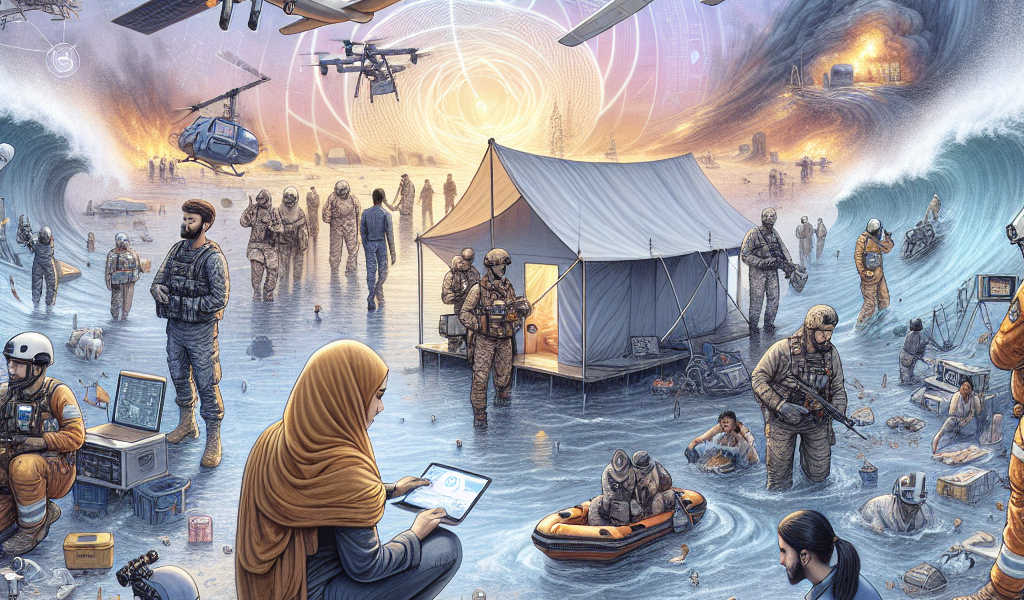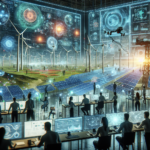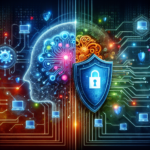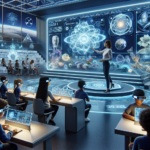-
Table of Contents
“Empowering Resilience: Tech-Driven Solutions for Swift and Effective Disaster Response”
Introduction
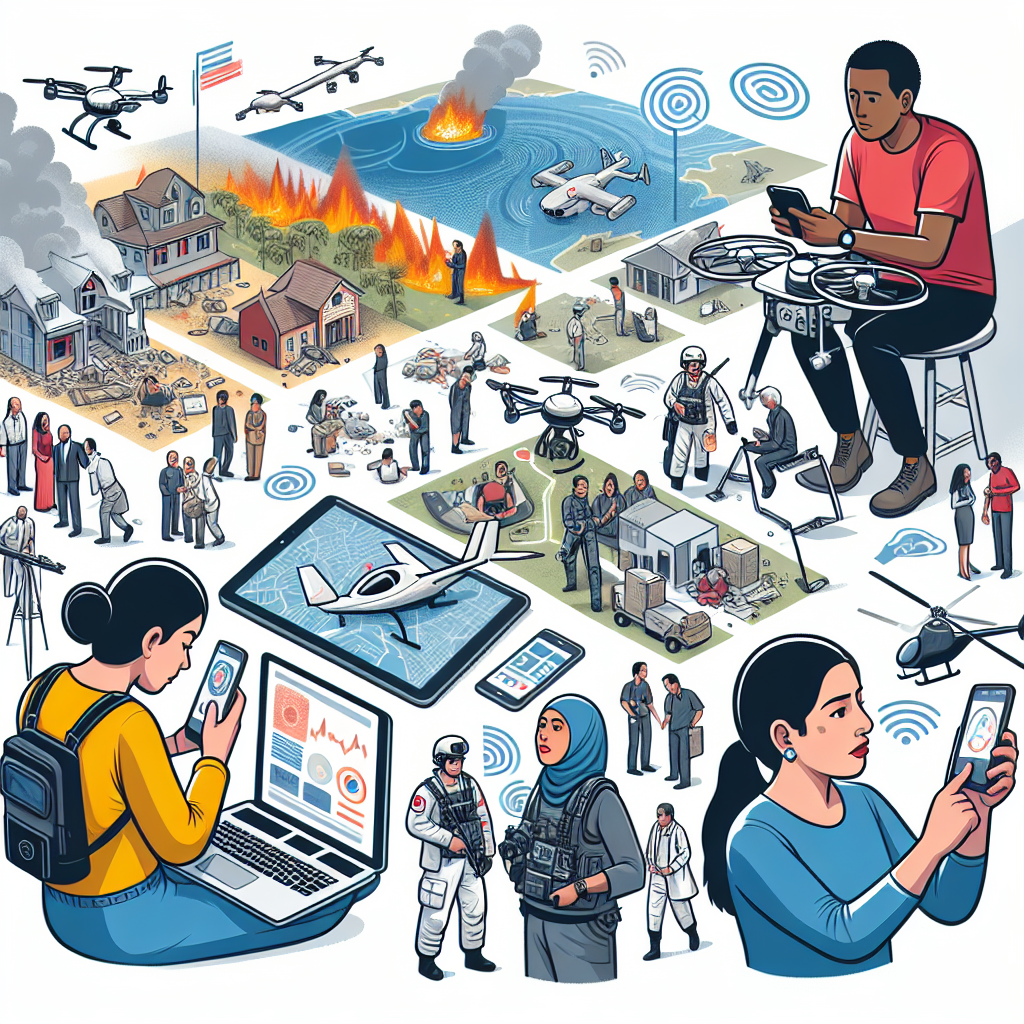
The Role of Tech in Enhancing Disaster Response
In an era marked by rapid technological advancements, the role of technology in enhancing disaster response has become increasingly pivotal. From early warning systems and real-time communication networks to advanced data analytics and unmanned aerial vehicles, technology is revolutionizing the way we prepare for, respond to, and recover from natural and man-made disasters. These innovations not only improve the efficiency and effectiveness of emergency response efforts but also significantly reduce the loss of life and property. By leveraging cutting-edge tools and platforms, disaster response teams can now access critical information faster, coordinate more effectively, and deploy resources more strategically, ultimately leading to more resilient communities and a safer world.
Leveraging Artificial Intelligence for Real-Time Disaster Response
In the wake of natural disasters, the speed and efficiency of response efforts can mean the difference between life and death. As climate change intensifies the frequency and severity of these events, the need for rapid, effective disaster response has never been more critical. Enter artificial intelligence (AI), a transformative technology that is revolutionizing the way we prepare for, respond to, and recover from disasters. By leveraging AI, emergency responders can now access real-time data, predictive analytics, and automated systems that significantly enhance their ability to save lives and mitigate damage.
One of the most compelling applications of AI in disaster response is its ability to process vast amounts of data quickly and accurately. During a disaster, information is often scattered across various sources, including social media, satellite imagery, and emergency calls. AI algorithms can sift through this data in real-time, identifying patterns and trends that human analysts might miss. For instance, during the devastating wildfires in California, AI systems were used to analyze satellite images and predict the fire’s path, allowing for more targeted evacuations and resource allocation.
Moreover, AI’s predictive capabilities are not limited to real-time analysis. Machine learning models can be trained on historical data to forecast future disasters and their potential impacts. This predictive power enables governments and organizations to take preemptive measures, such as reinforcing infrastructure or pre-positioning supplies, thereby reducing the overall impact of the disaster. For example, AI models have been used to predict the likelihood of flooding in various regions, allowing for the timely construction of barriers and the evacuation of at-risk populations.
In addition to predictive analytics, AI is also enhancing communication during disasters. Natural disasters often disrupt traditional communication channels, making it difficult for emergency responders to coordinate their efforts. AI-powered chatbots and virtual assistants can bridge this gap by providing real-time information and assistance to affected individuals. These systems can answer common questions, provide updates on the situation, and even guide people to safety. During Hurricane Harvey, for instance, AI chatbots were deployed to help residents find shelters and access emergency services, proving invaluable in a time of crisis.
Furthermore, AI is playing a crucial role in optimizing resource allocation during disaster response. In the chaos following a disaster, ensuring that resources such as food, water, and medical supplies reach those in need is a monumental challenge. AI algorithms can analyze data on population density, infrastructure damage, and supply levels to create optimized distribution plans. This ensures that resources are allocated efficiently, minimizing waste and maximizing impact. During the COVID-19 pandemic, AI was used to manage the distribution of medical supplies and vaccines, demonstrating its potential in both natural and man-made disasters.
While the benefits of AI in disaster response are undeniable, it is important to acknowledge the ethical considerations and potential pitfalls. The reliance on AI systems necessitates robust data privacy measures and transparency in decision-making processes. Additionally, there is a risk of over-reliance on technology, which could lead to complacency in human oversight. Therefore, it is crucial to strike a balance between leveraging AI’s capabilities and maintaining human judgment and accountability.
In conclusion, artificial intelligence is proving to be a game-changer in disaster response, offering unprecedented capabilities in data analysis, predictive modeling, communication, and resource allocation. As we continue to face the growing threat of natural disasters, the integration of AI into emergency response strategies will be essential in enhancing our ability to protect lives and property. By embracing this technology while remaining mindful of its limitations, we can build a more resilient and responsive disaster management system for the future.
The Impact of Drones in Search and Rescue Operations
In recent years, the integration of technology into disaster response has revolutionized the way search and rescue operations are conducted. Among the most transformative advancements is the use of drones, which have proven to be invaluable tools in the aftermath of natural disasters. These unmanned aerial vehicles (UAVs) offer a bird’s-eye view of disaster-stricken areas, providing critical information that can save lives and streamline rescue efforts.
When disaster strikes, time is of the essence. Traditional search and rescue methods often involve ground teams navigating through hazardous and sometimes inaccessible terrain, which can be both time-consuming and dangerous. Drones, however, can be deployed quickly and can cover large areas in a fraction of the time it would take for human teams to do so. Equipped with high-resolution cameras and thermal imaging technology, drones can locate survivors trapped under rubble, identify safe pathways for rescuers, and assess the overall damage to infrastructure.
Moreover, drones can operate in conditions that are too perilous for human responders. For instance, in the aftermath of an earthquake, buildings may be unstable, and aftershocks can pose significant risks. Drones can fly over these unstable structures, capturing real-time data without putting human lives at risk. This capability not only enhances the safety of rescue teams but also ensures that efforts are directed where they are most needed.
In addition to their immediate impact on search and rescue operations, drones also play a crucial role in disaster preparedness and mitigation. By conducting aerial surveys and creating detailed maps of vulnerable areas, drones can help communities better understand their risks and develop more effective emergency response plans. This proactive approach can significantly reduce the impact of future disasters, ultimately saving lives and resources.
The use of drones in disaster response is not without its challenges. Regulatory hurdles, privacy concerns, and the need for specialized training are all factors that must be addressed to fully realize the potential of this technology. However, the benefits far outweigh the drawbacks. In many cases, drones have already proven their worth. For example, during the 2017 hurricanes in the United States, drones were used extensively to assess damage, deliver supplies, and locate stranded individuals. Their ability to operate in difficult conditions and provide real-time information was instrumental in the overall response efforts.
Furthermore, the humanitarian impact of drones extends beyond immediate disaster response. In remote or conflict-affected areas, where access to medical care and supplies is limited, drones can deliver essential items such as food, water, and medicine. This capability is particularly important in the aftermath of a disaster when traditional supply chains are often disrupted. By bridging the gap between affected communities and aid organizations, drones can ensure that help reaches those who need it most.
As technology continues to advance, the role of drones in disaster response is likely to expand. Innovations such as artificial intelligence and machine learning are being integrated into drone systems, enabling them to analyze data more efficiently and make autonomous decisions. These advancements will further enhance the effectiveness of search and rescue operations, making them faster, safer, and more precise.
In conclusion, the impact of drones in search and rescue operations cannot be overstated. Their ability to quickly and safely gather critical information, coupled with their potential to deliver aid in challenging conditions, makes them indispensable tools in modern disaster response. While challenges remain, the continued development and deployment of drone technology hold great promise for enhancing the resilience of communities worldwide.
How Blockchain Technology Ensures Transparency in Disaster Relief Efforts
In the wake of natural disasters, the urgency to provide relief and support to affected communities is paramount. However, the process of distributing aid is often fraught with challenges, including inefficiencies, corruption, and lack of transparency. Blockchain technology, with its decentralized and immutable ledger system, is emerging as a powerful tool to address these issues, ensuring that disaster relief efforts are both transparent and effective.
Blockchain’s core feature is its ability to create a transparent and tamper-proof record of transactions. This characteristic is particularly valuable in disaster relief scenarios, where the need for accountability is critical. For instance, when funds are donated to a relief organization, blockchain can track the flow of money from the donor to the end recipient. Each transaction is recorded on a public ledger, which can be accessed and verified by anyone. This level of transparency helps to build trust among donors, who can see exactly how their contributions are being used.
Moreover, blockchain technology can streamline the distribution of aid by reducing the number of intermediaries involved. Traditional relief efforts often involve multiple layers of bureaucracy, which can slow down the process and increase the risk of funds being siphoned off. By using smart contracts—self-executing contracts with the terms of the agreement directly written into code—blockchain can automate and expedite the distribution of resources. For example, a smart contract could be programmed to release funds to a local supplier once certain conditions are met, such as the delivery of essential goods to a disaster-stricken area. This not only speeds up the process but also ensures that funds are used for their intended purpose.
In addition to financial transparency, blockchain can also enhance the traceability of physical goods. During disaster relief operations, it is crucial to ensure that supplies such as food, water, and medical equipment reach those in need. Blockchain can be used to create a digital record of each item, tracking its journey from the supplier to the final recipient. This can help to prevent theft and diversion of supplies, which are common issues in disaster zones. Furthermore, it allows relief organizations to monitor the distribution process in real-time, making it easier to identify and address any bottlenecks or discrepancies.
Another significant advantage of blockchain technology is its ability to facilitate collaboration among different stakeholders. Disaster relief efforts often involve a wide range of actors, including government agencies, non-governmental organizations (NGOs), and private sector companies. Blockchain can provide a shared platform where all parties can access and update information, ensuring that everyone is on the same page. This can improve coordination and reduce duplication of efforts, ultimately leading to a more efficient and effective response.
While blockchain technology holds great promise for enhancing transparency in disaster relief efforts, it is not without its challenges. Implementing blockchain solutions requires technical expertise and infrastructure, which may be lacking in some disaster-prone regions. Additionally, there are concerns about data privacy and security, particularly when dealing with sensitive information. However, with ongoing advancements in technology and increasing awareness of its potential benefits, these challenges can be addressed.
In conclusion, blockchain technology offers a compelling solution to some of the most pressing issues in disaster relief efforts. By providing a transparent, efficient, and collaborative platform, it can help to ensure that aid reaches those who need it most, restoring hope and dignity to communities in crisis. As we continue to face the growing threat of natural disasters, embracing innovative technologies like blockchain will be crucial in building a more resilient and responsive global relief system.
Conclusion
The role of technology in enhancing disaster response is pivotal, offering significant improvements in communication, coordination, and efficiency. Advanced technologies such as satellite imagery, drones, and AI-driven analytics provide real-time data and predictive insights, enabling quicker and more accurate decision-making. Mobile applications and social media platforms facilitate rapid information dissemination and community engagement, while IoT devices and sensors enhance monitoring and early warning systems. Overall, technology not only accelerates response times but also optimizes resource allocation, ultimately saving lives and reducing the impact of disasters.

